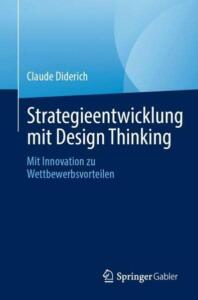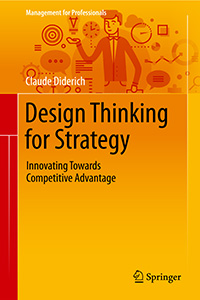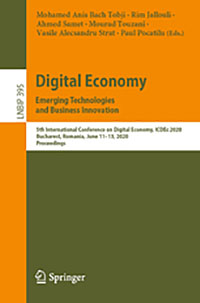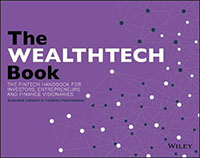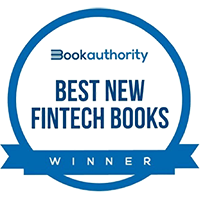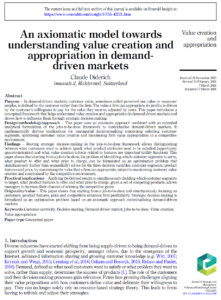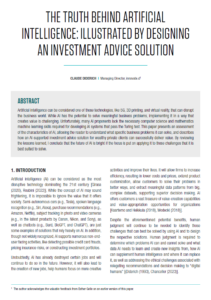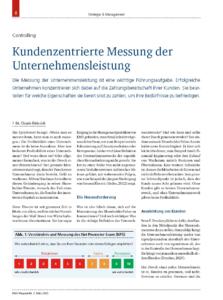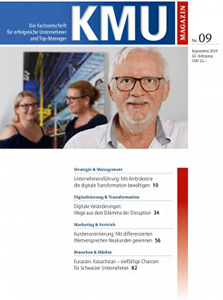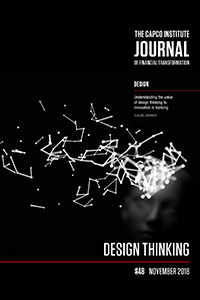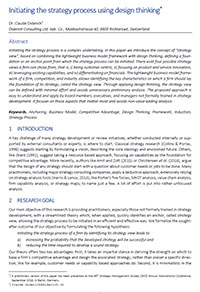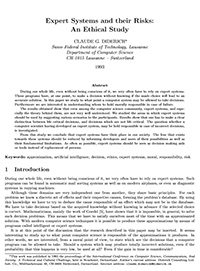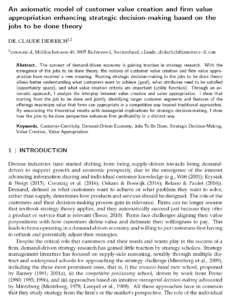PUBLICATIONS
BOOKS
Strategieentwicklung mit Design Thinking: Mit Innovation zu Wettbewerbsvorteilen (in german)
by Dr Claude Diderich | November • 2023 | Springer Gabler | Heidelberg, Germany
The business environment is changing more rapidly than it has ever before. New business ideas emerge. Design Thinking for Strategy introduces readers to applying insights from design thinking towards crafting novel strategies that satisfy real customer needs, exploit available capabilities, integrate requirements towards financial success, and provide a competitive advantage
Design Thinking for Strategy guides the reader through the jungle encountered when developing a strategy for sustained growth and profitability. It addresses strategy design in a holistic way by applying abductive reasoning, iteratively observing customers, focusing on empathy, prototyping ideas, and validating them with real customers
Design Thinking for Strategy: Innovating towards Competitive Advantage
by Dr Claude Diderich | October • 2019 | Springer | Heidelberg, Germany
The business environment is changing more rapidly than it has ever before. New business ideas emerge. Design Thinking for Strategy introduces readers to applying insights from design thinking towards crafting novel strategies that satisfy real customer needs, exploit available capabilities, integrate requirements towards financial success, and provide a competitive advantage
Design Thinking for Strategy guides the reader through the jungle encountered when developing a strategy for sustained growth and profitability. It addresses strategy design in a holistic way by applying abductive reasoning, iteratively observing customers, focusing on empathy, prototyping ideas, and validating them with real customers
Positive Alpha Generation: Designing Sound Investment Processes
by Dr Claude Diderich | January • 2009 | John Wiley & Sons | Chichester, United Kingdom
Dr Claude Diderich describes tools and techniques, which can be used to develop qualitative and/or quantitative investment processes for actively managing investment products. He focuses on how theoretical models can and should be used in practice. He describes the interaction between different elements of an investment process’s value chain in a single and consistent framework. A key focus is placed on illustrating the theory with real world examples. At the end of the book the reader will be capable of designing or enhancing an investment process for an investment or portfolio managers products from start to finish
CHAPTERS IN BOOKS
Digital Business Model Innovation Towards Competitive Advantage
by Dr Claude Diderich | June • 2020 | in Digital Economy. Emerging Technologies and Business Innovation, 5th International Conference on Digital Economy, ICDEc 2020, Bucharest, Romania, Bach Tobji, M.A., Jallouli, R., Samet, A., Touzani, M., Strat, V.A., Pocatilu, P. (Eds.) | Springer | Cham, Switzerland | pp. xv-xvii
At least since the advent of Amazon, digital business model innovation is in every manager’s mouth. Many successful firms, including Airbnb, Facebook, and Apple, rely on fundamentals of digital business models to define their strategy. Successful digital business models need to exhibit four traits: They must be desirable, feasible, viable, and competitive.
Strategizing about RoboAdvice
by Dr Claude Diderich | December • 2019 | in WealthTech: Wealth and Asset Management in the Fintech Age, P. Schueffel (ed.) | Information Age Publishing | Charlotte, NC | pp. 157-164
When talking about the future of WealthTech, the buzzword Robo-Advice is not far away. But what is Robo-Advice? In this chapter, I will review different strategies implemented by Robo-Advisors worldwide. I will focus on identifying key challenges and illustrate opportunities for competitive advantage, focusing on desirability, feasibility, and viability
The Wealth Management Canvas – A Framework for Designing the WealthTech Firm of the Future
by Dr Claude Diderich | May • 2018 | in The WEALTHTECH Book, S. Chishti & T. Puschmann (eds.) | John Wiley & Sons | Chicester, United Kingdom | pp. 260-264
Many WealthTech firms are facing challenging times because they only focus on one property in their business model. Understanding how technology can help investment customers satisfy their needs and fulfill their jobs to be done is key for success and to deliver value. The wealth management canvas provides a framework to support WealthTech firms in designing and validating their business models in a holistic way. It relates innovative technologies to the value proposition and allows defining a sustainable competitive advantage. It is a proven tool for transforming creative WealthTech ideas into viable businesses. It focuses on those aspects that matter most and helps avoid many pitfalls
JOURNAL AND CONFERENCE PAPERS
An axiomatic model towards understanding value creation and appropriation in demand-driven markets
by Dr Claude Diderich | March • 2024| in Journal of Strategy and Management | Vol. ahead-of-print | No. ahead-of-print | pp. ahead-of-print| doi: 10.1108/JSMA-11-2023-0299
In demand-driven markets, customer value, sometimes called perceived use value or consumer surplus, is defined by the customer rather than the firm. The value a firm can appropriate, its profits, is driven by the customer’s willingness to pay for the value they receive, adjusted by costs. This paper introduces a conceptual framework that helps understand value creation and appropriation in demand-driven markets and shows how to influence them through strategic decision-making.
This paper uses an axiomatic approach combined with an extended analytical formulation of the jobs-to-be-done framework to contextualise demand-driven markets. It mathematically derives implications for managerial decision-making concerning selecting customer segments, optimising customer value creation, and maximising firm value appropriation in a competitive environment.
Rooting strategic decision-making in the jobs-to-be-done framework allows distinguishing between what customers want to achieve (goal), what product attributes need to be satisfied (opportunity space/constraints), and what value creation criteria related to features are important (utility function). This paper shows that starting from a jobs-to-be-done, the problem of identifying which customer segments to serve, what product to offer, and what price to charge, can be formulated as an optimisation problem that simultaneously (rather than sequentially) solves for the three decision variables, customer segments, product features, and price, by maximising the value that a firm can appropriate subject to maximising customer value creation and constrained by the competitive environment.
Applying the derived results to simultaneously deciding which customer segments to target, what product features to offer, and what price to charge, given a set of competing products, allows managers to increase their chances of winning the competitive game.
This paper shows that starting from a job-to-be-done and simultaneously focusing on customers, product features, price, and competitors enhances firm profitability. Strategic decision- making is formulated as an optimisation problem based on an axiomatic approach contextualising demand-driven markets.
The Truth behind Artificial Intelligence: Illustrated by Designing an Investment Advice Solution
by Dr Claude Diderich | November • 2023| in Journal of Financial Transformation | No. 58 | pp. 116-125
Artificial intelligence can be considered one of those technologies, like 5G, 3D printing, and virtual reality, that can disrupt the business world. While AI has the potential to solve meaningful business problems, implementing it in a way that creates value is challenging. Unfortunately, many AI proponents lack the necessary computer science and mathematics machine learning skills required for developing AI systems that pass the Turing test. This paper presents an assessment of the characteristics of AI, allowing the reader to understand what specific business problems it can solve, and describes how an AI-supported investment advice solution for wealthy private clients can successfully deliver value. By reviewing the lessons learned, I conclude that the future of AI is bright if the focus is put on applying it to those challenges that it is best suited to solve.
Customer-centric measurement of business performance (in german)
by Dr Claude Diderich | March • 2023 | in KMU Magazin | Nr. 03 | pp. 8-11
Measuring corporate performance is an important management task. Successful companies focus on their customers’ willingness to pay. They assess which features of the products and services offered customers value and how much they are willing to pay to satisfy their needs.
Successfully gaining new customers with differentiated value propositions (in german)
by Dr Claude Diderich | September • 2019 | in KMU Magazin | Nr. 09 | pp. 56-59
Successful companies meet customer needs with differentiated value propositions. The differentiation framework helps executives to develop unique value propositions for products and services. Thus, new customers can be won who would otherwise opt for competitive solutions.
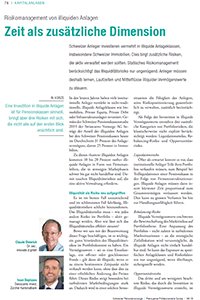
Risk management of illiquid assets: Time as an additional dimension (in german and french)
by Dr Claude Diderich and Iwan Deplazes, Swisscanto Invest | August • 2019 | in Schweizer Personalvorsorge / Prévoyance Professionelle Suisse | No. 8-19 | pp. 76-79
Swiss investors are increasingly investing in illiquid asset classes, especially Swiss real estate. This carries additional risks that should be actively managed. Static risk management considers the illiquidity risk insufficiently. Investors must therefore learn how to manage maturities and cash flows of illiquid assets
Understanding the Value of Design Thinking to Innovation in Banking
by Dr Claude Diderich | November • 2018 | in Journal of Financial Transformation | No. 48 | pp. 64-73
With the advent of FinTech, the banking world has been confronted with the method of design thinking, a proven method for solving wicked problems. Design thinking unleashes creativity and supports developing innovative solutions that are desirable (customers are interested in buying), feasible (banks can deliver upon the promises made), and viable (banks can make a profit). It puts the customer center-stage, focuses on satisfying customer needs and understanding customer jobs-to-be-done. Through its iterative approach, design thinking delivers differentiated and superior solutions, both from a functional and an emotional perspective. By observing customers in their natural environment, prototyping and validating ideas, design thinking ensures that developed solutions work. This article discusses how design thinking can aid in making banking more innovative
Initiating the Strategy Process using Design Thinking
by Dr Claude Diderich | March • 2017 | in Change Management Strategy eJournal | https://ssrn.com/abstract=2927941
A preliminary version of this paper was presented at the 36th Strategic Management Society (SMS) Annual International Conference | September • 2016 | Berlin, Germany
Initiating the strategy process is a complex undertaking. In this paper, we introduce the concept of “strategic focus”, based on combining the lightweight business model framework with design thinking, defining a foundation or an anchor point from which the strategy process can be initiated. There exist four possible strategy views a firm can chose from, that is, i) being customer centric, ii) focusing on product and service innovation, iii) leveraging existing capabilities, and iv) differentiating on financials. The lightweight business model framework of a firm, competition, and industry allows identifying the key characteristics on which a firm should lay the foundation of its strategy, called the strategy view. Through applying design thinking, the strategy view can be defined with minimal effort and avoids unnecessary preliminary analysis. The proposed approach is easy to understand and apply by board members, executives, and managers not formally trained in strategy development. It focuses on those aspects that matter most and avoids non-value adding analysis
The Min-Max Portfolio Optimization Strategy: An Empirical Study on Balanced Portfolios
by Dr Claude Diderich & Wolfgang Marty | September • 2001 | in Numerical Analysis and Its Applications, L. Vulkov, P. Yalamov, & J. Waśniewski (eds) | Lecture Notes in Computer Science | Vol. 1988 | Springer | Heidelberg, Germany | pp. 238-245
Modern investment processes often use quantitative models based on Markowitz’s mean-variance approach for determining optimal portfolio holdings. A major drawback of using such techniques is that the optimality of the portfolio structure only holds with respect to a single set of expected returns. Becker, Marty, and Rustem introduced the robust min-max portfolio optimization strategy to overcome this drawback. It computes portfolio holdings that guarantee a worst-case risk/return tradeoff. whichever of the specified scenarios occurs. In this paper we extend the approach to include transaction costs. We illustrate the advantages of the min-max strategy on balanced portfolios. The importance of considering transaction costs when rebalancing portfolios is shown. The experimental results illustrate how a portfolio can be insured against a possible loss without sacrificing too much upside potential
Expert Systems and their Risks: An Ethical Study
by Claude Diderich | 1993 | in International Conference on Computer Science, Communication, and Society: A Technical and Cultural Challenge | Neuchâtel, Switzerland | https://ssrn.com/abstract=3071708
During our whole life, even without being conscious of it, we very often must rely on expert systems. These programs have, at one point, to decide without knowing if the made choice will lead to an accurate solution. In this paper we study to what point a computer system may be allowed to take decisions. Furthermore, we are interested in understanding whom to hold morally responsible in case of failure
The results obtained show that even among the computer science community, expert systems, and especially the theory behind them, are not very well understood. We studied the areas in which expert systems should be used by suggesting various scenarios to the participants. Results show that one has to make a clear distinction between life critical decisions, and decisions which are not life critical. The question whether a computer scientist having developed an expert system, may be held responsible in case of incorrect decisions, is investigated
From this study we conclude that expert systems have their place in our society. The fear that exists towards these systems should be reduced by informing developers and users of their possibilities as well as their fundamental limitations. As often as possible, expert systems should be seen as decision making aids or tools instead of replacement of persons
WHITE PAPERS AND BLOG CONTRIBUTIONS
An axiomatic model of customer value creation and firm value appropriation enhancing strategic decision-making based on the jobs to be done theory
by Dr Claude Diderich | March • 2022
The concept of demand-driven economy is gaining traction in strategy research. With the emergence of the jobs to be done theory, the notions of customer value creation and firm value appropriation have received a new meaning. Rooting strategic decision-making in the jobs to be done theory allows better understanding what customers want to achieve (goal), what attributes need to be satisfied (opportunity space), and what value creation criteria are important (utility function). Through an axiomatic approach, I analyze the interplay between value creation and value appropriation. I show that starting from the job to be done and jointly identifying target customer segments and features of the
offerings maximizes value that firms can appropriate in a competitive way beyond traditional approaches. By associating the theoretical results with managerial implications for strategic decision-making, I show how the jobs to be done perspective enhances firm profitability in a distinct way.
Opportunities and risks of a capital withdrawal (in german)
by Luca Diener, Diener Financial Consulting and Dr Claude Diderich | March • 2022 | in HANDELSZEITUNG Online
The Swiss pension system is based on the three-pillar principle. While the first pillar (AHV) is used to secure a livelihood, the second pillar (BVG) is intended to ensure that the standard of living is maintained during retirement. With the voluntary third pillar, everyone can save for themselves and thus improve their pension. In the second pillar, the retirement capital saved is converted into a pension at retirement using the conversion rate. Alternatively, the pensioner can usually withdraw the accumulated capital as a whole and forego a pension.
